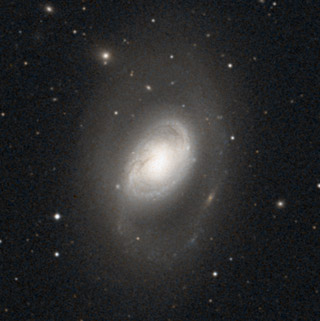| Messier
96 is a nearly face-on spiral galaxy that makes a famous
pair with its neighbor, M95. Both were discovered by
Mechain on the night of March 20, 1781. These two
galaxies, the nearby NGC 3379, NGC 3384, NGC 3389 and
possibly the other Messier pair in Leo (M65 and M66) are all
part of the Leo galaxy cluster, lying about 30-40 million
light year distant. That's about 15 times farther away
than the Local Group member M31 (this is still quite
nearby).
Of the M95/96
pair Walter Scott Houston wrote uncharacteristically that
"They are not breathtaking (to say the least) and for
users of small telescopes a good description is that they
are bright enough to be seen." But don't let that
bland description turn you away from this pair; there is
more to them that first meets the eye.
M96 is the
brighter of the two, appearing as a gray blur in binoculars
or small telescopes. In my 18-inch at 94x M96
displayed a bright, non-stellar, inner core surrounded
by a large, american football-shaped outer region which
tapered gently away. At 270x, a starlike core appeared
inside of the larger inner region.
|
 |